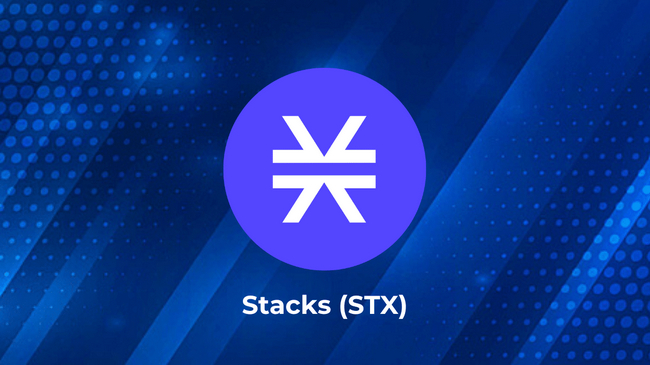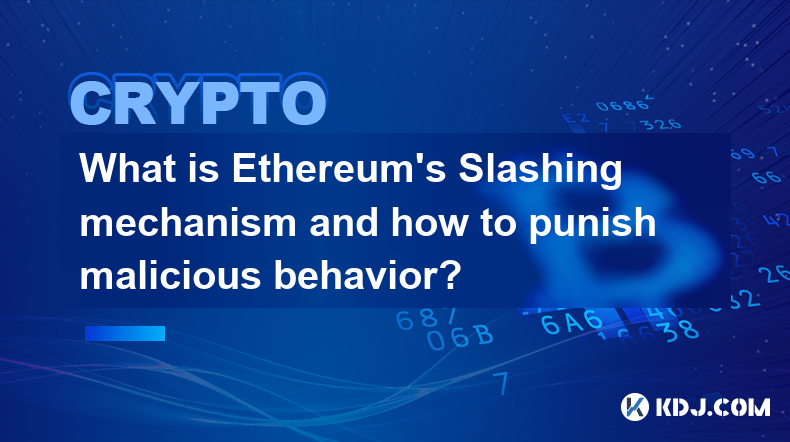-
 Bitcoin
Bitcoin $77,746.4485
-6.58% -
 Ethereum
Ethereum $1,568.0300
-13.06% -
 Tether USDt
Tether USDt $0.9990
-0.07% -
 XRP
XRP $1.9002
-11.23% -
 BNB
BNB $551.0491
-7.03% -
 USDC
USDC $0.9999
-0.01% -
 Solana
Solana $105.2733
-11.96% -
 Dogecoin
Dogecoin $0.1480
-12.21% -
 TRON
TRON $0.2287
-3.75% -
 Cardano
Cardano $0.5673
-13.18% -
 UNUS SED LEO
UNUS SED LEO $8.8586
-2.93% -
 Chainlink
Chainlink $11.1656
-12.71% -
 Toncoin
Toncoin $2.9001
-10.87% -
 Stellar
Stellar $0.2258
-10.22% -
 Shiba Inu
Shiba Inu $0.0...01120
-9.08% -
 Avalanche
Avalanche $15.8688
-10.98% -
 Sui
Sui $1.9070
-13.66% -
 Hedera
Hedera $0.1378
-14.83% -
 Polkadot
Polkadot $3.6520
-7.47% -
 MANTRA
MANTRA $5.7460
-8.35% -
 Dai
Dai $1.0000
-0.01% -
 Bitcoin Cash
Bitcoin Cash $269.9393
-10.82% -
 Litecoin
Litecoin $69.5537
-15.68% -
 Ethena USDe
Ethena USDe $0.9986
-0.05% -
 Bitget Token
Bitget Token $4.0570
-8.98% -
 Pi
Pi $0.6100
0.34% -
 Monero
Monero $197.5668
-7.30% -
 Hyperliquid
Hyperliquid $10.1805
-15.00% -
 Uniswap
Uniswap $5.0461
-13.67% -
 OKB
OKB $52.5657
1.42%
How to buy STX coin? Graphic tutorial on the steps of buying and selling STX coins
To purchase STX coins, create an account on a reputable cryptocurrency exchange, fund it, search for STX, place a buy order, and finalize the transaction.
Oct 03, 2024 at 09:18 am

How to Buy STX Coin: A Comprehensive Step-by-Step Guide
Step 1: Create an Account on a Cryptocurrency Exchange
Choose a reputable cryptocurrency exchange that supports STX trading. Some popular options include Coinbase, Binance, and Kraken. Create an account by providing your personal information and completing identity verification.
Step 2: Fund Your Exchange Account
Once your account is verified, you need to fund it with fiat currency or cryptocurrency. Most exchanges offer various payment methods, such as bank transfers, credit/debit cards, and other cryptocurrencies.
Step 3: Search for STX Coin
Navigate to the trading page of your chosen exchange and search for STX coin. This may differ slightly depending on the exchange you use.
Step 4: Place a Buy Order
Specify the amount of STX coins you want to purchase. Select the desired order type (e.g., market order, limit order) and confirm the transaction.
Step 5: Finalize the Purchase
Once your order is completed, the STX coins will be transferred to your exchange wallet. You can view your balance and transaction history from your account dashboard.
Step 6: Withdraw STX Coins (Optional)
If you wish to store your STX coins in your own crypto wallet, you can withdraw them from the exchange. To do so, provide the wallet address associated with your external wallet and initiate the withdrawal process.
Step 7: Selling STX Coins
To sell STX coins, follow the same steps in reverse order. Place a sell order on the exchange, specify the amount and order type, and confirm the transaction. Once the sale is completed, the proceeds will be deposited into your exchange account.
Additional Tips
- Research different cryptocurrency exchanges and choose one with low trading fees and a strong reputation.
- Consider the security measures employed by the exchange to protect your assets.
- Store your STX coins in a hardware wallet for enhanced security.
- Monitor the market conditions and cryptocurrency prices before making any trading decisions.
Disclaimer:info@kdj.com
The information provided is not trading advice. kdj.com does not assume any responsibility for any investments made based on the information provided in this article. Cryptocurrencies are highly volatile and it is highly recommended that you invest with caution after thorough research!
If you believe that the content used on this website infringes your copyright, please contact us immediately (info@kdj.com) and we will delete it promptly.
- ZachXBT Reports Coinbase User Lost $34.9 Million in a Sophisticated Scam
- 2025-04-07 08:15:12
- Bitcoin is climbing, but some underlying signals are worrying
- 2025-04-07 08:15:12
- Aptos Foundation Launches Hiraya Network in the Philippines, Aiming to Empower Growth of Local Talent and Projects
- 2025-04-07 08:10:31
- Event Details
- 2025-04-07 08:10:31
- Dominari Holdings Becomes the Latest Public Company to Adopt a Bitcoin Treasury Strategy
- 2025-04-07 08:05:12
- It's Been Almost 16 Years Since Blockchain Emerged
- 2025-04-07 08:05:12
Related knowledge

What is Ethereum’s Slashing mechanism and how to punish malicious behavior?
Feb 20,2025 at 03:08am
Key PointsOverview of slashingDifferent types of slashing in EthereumIncentives and consequences of slashingIdentifying and reporting slashed validatorsOngoing discussions and potential improvementsEthereum's Slashing Mechanism: Punishing Malicious BehaviorEthereum's slashing mechanism is an essential tool for ensuring network security and punishing mal...

What is the verifier node of Ethereum and how to become a verifier?
Feb 19,2025 at 06:00pm
The Verifier Node of Ethereum: A Comprehensive GuideKey Points:What is a Verifier Node?How to Become a Verifier NodeResponsibilities and Rewards of a Verifier NodeMinimum Requirements for Becoming a Verifier NodePotential Difficulties in Running a Verifier Node1. What is a Verifier Node?A Verifier Node is an independent entity on the Ethereum network th...

What is Ethereum’s staking, and how to participate and earn money?
Feb 19,2025 at 04:37pm
Key Points:Understanding Ethereum's Staking MechanismSteps to Participate in StakingBenefits and Rewards of StakingSecurity and Risk ConsiderationsTechnical Requirements and Hardware OptionsPotential Challenges and Troubleshooting TipsFAQs on Ethereum StakingWhat is Ethereum's Staking?Proof-of-Stake (PoS) is a consensus mechanism used in blockchain netw...

What is Ethereum’s DAO (Decentralized Autonomous Organization) and how does it work?
Feb 20,2025 at 03:12am
Key PointsDefinition and Structure of a DAOGovernance and Decision-Making in DAOsBenefits and Use Cases of DAOsChallenges and Limitations of DAOsWhat is Ethereum's DAO (Decentralized Autonomous Organization) and How Does It Work?Definition and Structure of a DAOA Decentralized Autonomous Organization (DAO) is an innovative governance and management fram...

What is Ethereum's multi-signature wallet and how to improve security?
Feb 20,2025 at 02:18pm
Key Points:Understanding the Concept of a Multi-Signature WalletBenefits and Drawbacks of Multisig WalletsRequirements for Setting Up a Multisig WalletStep-by-Step Guide to Generating a Multisig WalletImplementing Strategies for Enhanced Security1. Understanding the Concept of a Multi-Signature WalletA multi-signature (multisig) wallet in the Ethereum e...

What is Ethereum's oracle and how to provide data for smart contracts?
Feb 21,2025 at 01:30am
Key Points:Understanding the concept of oracles in EthereumExploring different types of oraclesDetailed guide on how to provide data for smart contractsAddressing potential challenges and considerationsWhat is Ethereum's Oracle?Oracles are crucial components in the Ethereum ecosystem, enabling smart contracts to access real-world data and off-chain even...

What is Ethereum’s Slashing mechanism and how to punish malicious behavior?
Feb 20,2025 at 03:08am
Key PointsOverview of slashingDifferent types of slashing in EthereumIncentives and consequences of slashingIdentifying and reporting slashed validatorsOngoing discussions and potential improvementsEthereum's Slashing Mechanism: Punishing Malicious BehaviorEthereum's slashing mechanism is an essential tool for ensuring network security and punishing mal...

What is the verifier node of Ethereum and how to become a verifier?
Feb 19,2025 at 06:00pm
The Verifier Node of Ethereum: A Comprehensive GuideKey Points:What is a Verifier Node?How to Become a Verifier NodeResponsibilities and Rewards of a Verifier NodeMinimum Requirements for Becoming a Verifier NodePotential Difficulties in Running a Verifier Node1. What is a Verifier Node?A Verifier Node is an independent entity on the Ethereum network th...

What is Ethereum’s staking, and how to participate and earn money?
Feb 19,2025 at 04:37pm
Key Points:Understanding Ethereum's Staking MechanismSteps to Participate in StakingBenefits and Rewards of StakingSecurity and Risk ConsiderationsTechnical Requirements and Hardware OptionsPotential Challenges and Troubleshooting TipsFAQs on Ethereum StakingWhat is Ethereum's Staking?Proof-of-Stake (PoS) is a consensus mechanism used in blockchain netw...

What is Ethereum’s DAO (Decentralized Autonomous Organization) and how does it work?
Feb 20,2025 at 03:12am
Key PointsDefinition and Structure of a DAOGovernance and Decision-Making in DAOsBenefits and Use Cases of DAOsChallenges and Limitations of DAOsWhat is Ethereum's DAO (Decentralized Autonomous Organization) and How Does It Work?Definition and Structure of a DAOA Decentralized Autonomous Organization (DAO) is an innovative governance and management fram...

What is Ethereum's multi-signature wallet and how to improve security?
Feb 20,2025 at 02:18pm
Key Points:Understanding the Concept of a Multi-Signature WalletBenefits and Drawbacks of Multisig WalletsRequirements for Setting Up a Multisig WalletStep-by-Step Guide to Generating a Multisig WalletImplementing Strategies for Enhanced Security1. Understanding the Concept of a Multi-Signature WalletA multi-signature (multisig) wallet in the Ethereum e...

What is Ethereum's oracle and how to provide data for smart contracts?
Feb 21,2025 at 01:30am
Key Points:Understanding the concept of oracles in EthereumExploring different types of oraclesDetailed guide on how to provide data for smart contractsAddressing potential challenges and considerationsWhat is Ethereum's Oracle?Oracles are crucial components in the Ethereum ecosystem, enabling smart contracts to access real-world data and off-chain even...
See all articles





















































































